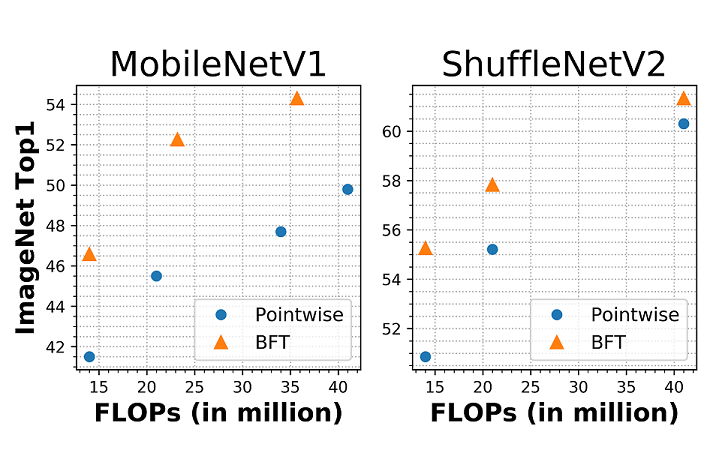Butterfly Transform: An Efficient FFT Based Neural Architecture Design
In this paper, we show that extending the butterfly operations from the FFT algorithm to a general Butterfly Transform (BFT) can be beneficial in building an efficient block structure for CNN designs. Pointwise convolutions, which we refer to as channel fusions, are the main computational bottleneck in the state-of-the-art efficient CNNs (e.g. MobileNets ). We introduce a set of criteria for channel fusion and prove that BFT yields an asymptotically optimal FLOP count with respect to these criteria. By replacing pointwise convolutions with BFT, we reduce the computational complexity of these layers from O(n^2) to O(n\log n) with respect to the number of channels. Our experimental evaluations show that our method results in significant accuracy gains across a wide range of network architectures, especially at low FLOP ranges. For example, BFT results in up to a 6.75% absolute Top-1 improvement for MobileNetV1, 4.4 \% for ShuffleNet V2 and 5.4% for MobileNetV3 on ImageNet under a similar number of FLOPS. Notably, ShuffleNet-V2+BFT outperforms state-of-the-art architecture search methods MNasNet, FBNet and MobilenetV3 in the low FLOP regime.
PDF Abstract CVPR 2020 PDF CVPR 2020 Abstract


 ImageNet
ImageNet